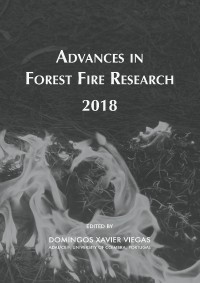Please use this identifier to cite or link to this item:
https://hdl.handle.net/10316.2/44583| Title: | Past fire practices and new steps towards an effective fire management approach in the Brazilian savannas | Authors: | Batista, Eugênia Kelly Luciano Russell-Smith, Jeremy Figueira, José Eugênio Côrtes |
Keywords: | Fire regimes;Adaptive fire management;Suppression policies;Ecological monitoring;Cerrado | Issue Date: | 2018 | Publisher: | Imprensa da Universidade de Coimbra | Journal: | http://hdl.handle.net/10316.2/44517 | Abstract: | Every year, widespread and severe fires cause loss of biodiversity and changes in the structure and functioning of savanna ecosystems. Currently, the Brazilian savanna (Cerrado) is threatened by the absence of a consistent fire policy. Most protected areas in Brazil still apply total fire suppression policies, instead of a more integrated fire management approach. Faced with the challenge of reconciling biodiversity conservation goals with rural livelihoods, scientists, policymakers and managers around the world have discussed potential solutions for managing fire in protected areas aimed at the sustainability of these ecosystems. Based on international experiences, an Integrated Fire Management Pilot Program was recently implemented in three Brazilian protected areas, while an adaptive and integrated approach has progressively raised the interest of other park managers. Initially, goals and actions have focused on protecting fire-sensitive vegetation and reducing the extent of areas burned, particularly at the end of the dry season. To achieve this, managers are making use of patch mosaic burning techniques to create mosaics of burnt and unburnt areas that purportedly decrease the probability of large wildfires and hence increase fire interval in fire-sensitive areas. However, despite advances in fire management policies in Brazilian savannas, an adaptive approach requires a continuous assessment of managed ecosystems, through which managers and ecologists can obtain knowledge about the responses of species and natural communities. Without a clear definition of appropriate ecological parameters, it is not possible to be sure if management actions or fire regime thresholds are actually delivering benefits for sustainable long-term biodiversity conservation. In this study, we use the example of the Canastra National Park (CNP) - Southeastern Brazil, to illustrate how widely employed suppression policies can result in inappropriate fire regimes and how these results have encouraged current changes in fire management perspectives. | URI: | https://hdl.handle.net/10316.2/44583 | ISBN: | 978-989-26-16-506 (PDF) | DOI: | 10.14195/978-989-26-16-506_66 | Rights: | open access |
| Appears in Collections: | Advances in forest fire research 2018 |
Files in This Item:
| File | Description | Size | Format | |
|---|---|---|---|---|
| past_fire_practices_and_new_steps.pdf | 1.33 MB | Adobe PDF |  |
Items in DSpace are protected by copyright, with all rights reserved, unless otherwise indicated.
